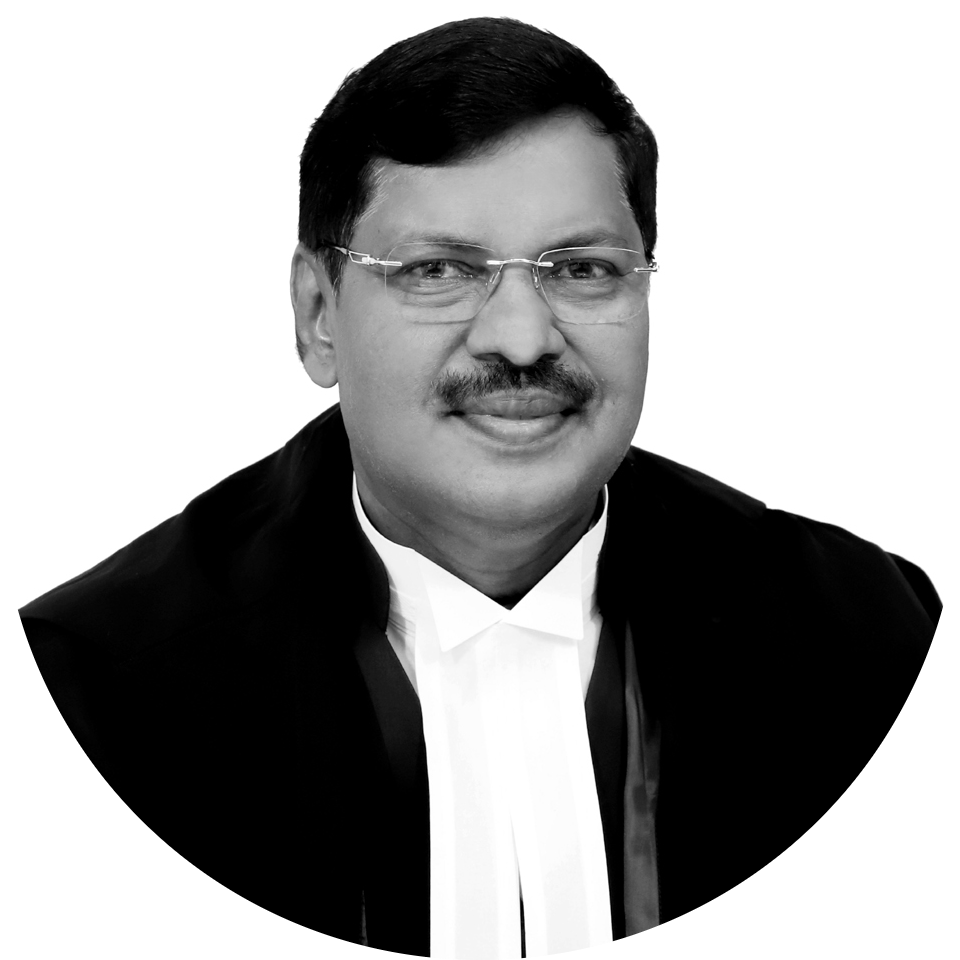B.R. Gavai

B.R. Gavai
Former Chief Justice of India
Assumed Office14th May, 2025
Retired On23rd Nov, 2025
Previously
Sitting Judge of the Supreme Court of IndiaMay 24th 2019 - May 13th 2025
Permanent Judge of the Bombay High CourtNovember 12th 2005 - May 24th 2019
Additional Judge of the Bombay High CourtNovember 14th 2003 - November 11th 2005
EnrolmentMarch 16th 1985.
Profile
Early Life
Justice Bhushan Ramkrishna Gavai was born on 24 November 1960 in Amravati, Maharashtra. His father R.S. Gavai was a prominent Ambedkarite leader associated with the Republican Party of India. He had served as a member of the Maharashtra Legislative Assembly and went on to become the Governor of Bihar, Sikkim and Kerala.
Justice Gavai completed his schooling in Amravati. He then pursued his Bachelor of Arts and Bachelor of Laws (B.A. LL.B.) degrees from Dr. Babasaheb Ambedkar College of Law, Nagpur University.
Career as an Advocate
Upon graduation, Justice Gavai enrolled as an advocate on 16 March 1985. He began his career under Barrister Raja S. Bhonsale, former Advocate General and Judge of the Bombay High Court. In 1987, he began to practice independently at the Nagpur Bench of Bombay High Court. In 1992, he was appointed as Assistant Government Pleader and Additional Public Prosecutor. He was then appointed as Government Pleader and Public Prosecutor in 2000.
Reportedly, Justice Gavai wished to relocate his practice to Delhi and had applied for a senior advocate designation. However, then Chief Justice of the Bombay High Court, C.K. Thakker, wanted to recommend him for appointment as a High Court judge.
Career as a Judge
Justice Gavai was appointed as an Additional Judge of the Bombay High Court on 14 November 2003. He then became a permanent Judge on 12 November 2005. He went on to serve as a Judge of the Bombay High Court for 16 years. He presided over Benches at the Principal Seat at Mumbai, Nagpur, Aurangabad and Panaji.
On 8 May 2019, the Collegium led by then CJI Ranjan Gogoi recommended his appointment to the Supreme Court. At the time, he was the fourth-most senior judge of the Bombay High Court and the eight-most senior High Court judge of India.In recommending Justice Gavai, the Collegium noted that it considered “due representation” as a criterion apart from seniority, integrity and merit. Justice Gavai was the first Supreme Court judge from the Scheduled Caste community in nine years, after the retirement of former Chief Justice K.G. Balakrishnan in 2010.
On 14 May 2025, Justice Gavai was sworn in as the 52nd Chief Justice of India. He will retire on 23 November, 2025 after a tenure of six months.
Figure 1 shows that Justice Gavai has authored 367 judgements, and has been a part of 707 benches.
Figure 2 shows that Justice Gavai has mainly authored judgements in Criminal Matters (46%). This is followed by Service, Property, Civil and Environment matters.
Notable Judgments
Justice Gavai contributed to several landmark Supreme Court rulings. He was part of the Constitution Benches that upheld the abrogation of Article 370 and struck down the electoral bonds scheme. He has been involved in several politically sensitive cases. For instance, in Rahul Gandhi v Purnesh Ishwarbhai Modi (2023), he was part of the three-Judge Bench which stayed Rahul Gandhi’s Criminal Defamation conviction. In 2024, he was on the Division Bench which granted bail to former Delhi Deputy Chief Minister Manish Sisodia after 17 months of incarceration, observing that Sisodia’s long period of incarceration deprived him of his right to speedy trial. Justice Gavai was on the Bench which held Advocate Prashant Bhushan guilty of contempt for his tweets criticising the Supreme Court and the Chief Justice. Lastly, a Bench led by him had granted bail to Journalist Teesta Setalvad, describing the reasoning of the Gujarat High Court in denying her bail as “perverse”.
In his concurring opinion in State of Punjab v Davinder Singh (2024), Justice Gavai supported sub-classification within the Scheduled Caste community. He analysed social realities that necessitated reservations while relying on the historical context to the terms ‘depressed classes’ and ‘Scheduled Castes.’ He recommended that the creamy layer exclusion must be applicable to the Scheduled Caste community. He directed the state to rely on empirical data and justifications while implementing sub-classification.
In Re: Directions in the matter of demolition of structures (2024), Justice Gavai declared that government-sanctioned bulldozer demolitions are a violation of rights against arbitrary state action and infringe on the right to shelter guaranteed under Articles 19 and 21. “The chilling sight of a bulldozer demolishing a building, when authorities have failed to follow the basic principles of natural justice and due process, reminds one of a lawless state of affairs, where ‘might was right’,” he wrote. Exercising its power to do complete justice under Article 142, the Court laid down procedural guidelines for demolitions, including a 15 days notice period to the property owner, notifying the local Collector or District Magistrate, and a substantive test of executive overreach to ensure the demolition’s primary motive is to remove illegal construction, not to punish the owner.
In Vivek Narayan Sharma v Union of India (2023) Justice Gavai wrote the majority opinion which upheld the Union’s 2016 Demonetisation Scheme. Justice Gavai held that the Union consulted with the RBI before announcing the scheme. Further, Justice Gavai stated that the Union has the power to declare all series of any denomination as invalid tender. Additionally, he noted that the Demonetisation scheme satisfied the ‘test of proportionality’.
In Sudru v The State of Chhattisgarh (2019), the Court had to decide whether the Appellant could have been convicted purely based on circumstantial evidence, especially when the principal witnesses have turned hostile. Justice Gavai authored the opinion on behalf of himself and Justice Deepak Gupta. He noted that although non-explanation or false explanation cannot be taken to complete the chain of circumstances to establish guilt, the false explanation can always be taken into consideration to fortify the finding of guilt already recorded based on other circumstances.